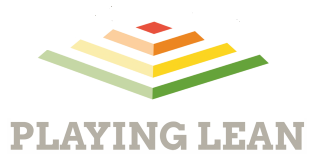When you’re building a two sided marketplace business, you’re essentially building two businesses at the same time - one for the demand side and one for the supply side. Your startup aims to deliver the marketplace where supply and demand meets, and somehow make a living from it. Think of AirBnB, with the demand side represented by travelers looking for accommodation and the supply side represented by home owners.
Tools like the Business Model Canvas easily represent one sided businesses - a clear value proposition delivered to defined customer segments. But what’s the best way to capture a two sided marketplace in the Business Model Canvas?
Build two sets of canvases
Each part of your two sided marketplace deserves its own, separate business model canvas. This sounds like extra work, but makes a lot of sense when you think about it. Take the Value Proposition, for instance. It will be something completely different for the two sides.
AirBnB’s Value Proposition to travelers has to do with finding cheaper, local and different options for lodging. For home owners, on the other hand, the value is mostly about extra income.
Take a look at Customer Relationships. AirBnB wants to build a community of hosts, exchanging best practices, tools and experience. For many years, the company organized a conference just for hosts. The relationship with travelers is different, mainly about providing a good self service booking experience online.
Having two separate canvases will also force you to make important decisions on the revenue streams. Some marketplaces charge a fee from the supply side. A listing fee, a referral fee or some kind of revenue share might be the way to go. Others take it from the demand side. This can for instance be a specific service fee that clearly goes to the marketplace provider (as with AirBnB). Another option is to take a small amount from both sides.
Make sure they are connected and protected
When you have built two canvases, it’s time to make sure they are well connected. Will suppliers help you deliver your Value Proposition to the customers? If AirBnB wants to deliver low cost lodging to travelers, they can’t uniquely reach out to owners of luxury homes. The combined Revenue Streams have to cover the Cost Structure of both canvases.
In addition, there’s an aspect of two sided marketplaces that is not covered by the Business Model Canvas. It has to do with protection. How are you going to make sure that your supply side and demand side are not going to take their business off the marketplace, once they have connected through your service? By going off marketplace, they could avoid your fee and split the difference.
This can be achieved in several ways. Ideally, protection is built in as part of your value proposition. It’s quite inconvenient for Uber drivers and customers to take their business off platform. Customers find, book and pay drivers through the app. Agreeing something on the side would be cumbersome and save the customer a very low amount.
The next level down would be to focus on the separate value that your marketplace delivers. This might be extra insurances and guarantees, or a 24/7 customer support in case something happens. For the demand side, your added value could be guaranteed payments or low credit times, improving cash flow. By going off platform, customer and supplier would be saying no to the extra value.
If you can’t design protection in as part of your service, you have to rely on policing your terms and conditions. All marketplaces will have terms and conditions regulating how customers and suppliers can interact, but if you don’t have the built in protection or added value, make sure to add some cost to your Business Model Canvas related to enforcing this.
Getting going
If you have drawn up your two Business Model Canvases, it’s time to start testing your hypotheses. Two sided marketplaces are classic chicken and egg issues. Without any supply, customers will have nothing to buy. Without any customers, suppliers will not be interested.
As always, the answer is to fake it. If you can somehow be a customer for your own service, use that to see if suppliers will sign up. If not, you can probably handle the supply side. AirBnB founders famously rented out an airbed in their own living room to get started. Uber founders took to the streets themselves, driving customers when there were too few suppliers.
Playing Lean 2 uses examples from AirBnB and other competitors in the hospitality industry.
